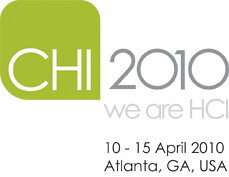Two weeks ago my student Alex Shyrokov defended his PhD dissertation. Alex was interested in human-computer interaction for cases when the human is engaged in a manual-visual task. In such situations a speech interface appears to be a natural way to communicate with a computer. Alex was especially interested in multi-threaded spoken HCI. In multi-threaded dialogues the conversants switch back and forth between multiple topics.

How should we design a speech interface that will support multi-threaded human-computer dialogues when the human is engaged in a manual-visual task? In order to begin answering this question Alex explored spoken dialogues between two human conversants. The hypothesis is that a successful HCI design can mimic some aspects of human-human interaction.
In Alex’s experiments one of the conversants (the driver) operated a simulated vehicle while the other (an assistant) was only engaged in the spoken dialogue. The conversants were engaged in an ongoing and in an interrupting spoken task. Alex’s dissertation discusses several interesting findings, one of which is that driving performance is worse during and after the interrupting task. Alex proposes that this is due to a shift in the driver’s attention away from driving and to the spoken tasks. The shift in turn is due to the perceived urgency of the spoken tasks – as the perceived urgency increases the driver is more likely to shift her attention away from driving. The lesson for HCI design is to be very careful in managing the driver’s perceived urgency when interacting with devices in the car.
Alex benefited tremendously from the help of my collaborator on this research Peter Heeman. Peter provided excellent guidance throughout Alex’s PhD studies for which I am grateful. Peter and I plan to continue working with Alex’s data. The data includes transcribed dialogues, videos, driving performance as well as eye tracker data. I am especially interested in using the eye tracker’s pupil diameter measurements to estimate cognitive load as we have done in work lead by Oskar Palinko [1].
References
[1] Oskar Palinko, Andrew L. Kun, Alexander Shyrokov, Peter Heeman, “Estimating Cognitive Load Using Remote Eye Tracking in a Driving Simulator,” ETRA 2010

